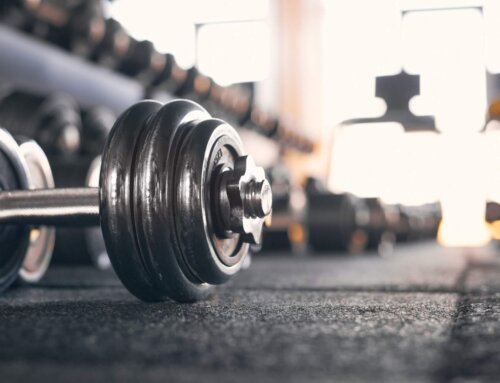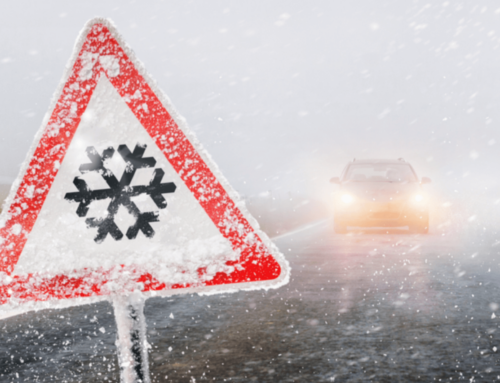As the UK cautiously starts to emerge from the darkest days of the Covid pandemic, life is gradually starting to resemble its pre-March 2020 format again. What the medium-term future will look like may become clearer in a few more months.
Covid 19 had a severe impact on most industries, although one of the positive aspects of the pandemic was how well many businesses managed to adapt to the emergency, particularly as employers embraced working from home.
Not all businesses have struggled in the pandemic months
If one type of business was made for the pandemic era, it is online shopping – from the consumers point of view, at least. Whilst online sales growth had been levelling off for a few years before the pandemic began, after the lockdown hit on March 17th 2020, online shopping surged with a 37% increase on 2019 sales. The most recent lockdown from early 2021, saw even stronger sales growth at an average rate of +71%.
You’ll notice we said online shopping was made for the pandemic era ‘from the consumers point of view, at least.’ Large online retail is warehouse based. As online shopping boomed, the pressure on warehouse employees has grown to ensure orders get fulfilled to meet customer expectations.
Amazon
The BBC online news website recently carried a report on conditions at Amazon warehouses in the USA, after a union backed study claimed workplace accidents at Amazon warehouses were as much as 80% higher than they were at other similar workplaces. The same report also referred to a leaked Amazon warehouse pamphlet which suggested employees working in the warehouses should consider themselves as “industrial athletes”. The technology website Motherboard – Tech by Vice carried a copy of the pamphlet which informed employees:
“Some positions (employees) will walk up to 13 miles a day, whilst some positions will have a total of 20,000 pounds lifted before they complete their shift.”
The pamphlet contained advice on diet, exercise, and sleep plus tips for avoiding injuries (from overwork?) , advising:
“Fatigue is often a large factor in injuries.”
(Amazon told the Motherboard website the pamphlet had been created in error and it had been promptly removed.)
Whatever the situation is at Amazon in the US, it is right to say fatigue does play a big part in the causation of accidents at work. It isn’t being presumptuous to conclude that if online sales have boomed, those who work in the warehouses of retail giants in the UK, will themselves be working harder than ever before. Working under pressure, combined with fatigue, leads to mistakes being made and when mistakes are made in warehouses, the consequences can be severe. Warehouse accidents are notorious for causing serious injuries.
What are the most common types of warehouse accident?
1. Manual handling accidents
Accidents caused by handling, lifting, or carrying heavy goods account for a high percentage of all non-fatal workplace accidents causing personal injury. By their very nature, accidents of this kind are common amongst warehouse employees.
Manual handling accidents frequently cause back injuries. Although often the cause of muscle damage brought on by lifting heavy weights over a period of time, manual handling injuries can just as easily be due to one particular incident.
Back injury compensation claims are frequently brought by warehouse employees who have injured their back through heavy lifting or equally through pushing or pulling heavy objects.
Although manual handling operations are heavily regulated by government rules (legislation) such as The Manual Handling Operations Regulations 1992 and The Lifting Operations and Lifting Equipment Regulations 1998 the large numbers of work related musculoskeletal (soft tissue) happening each year as a result of heavy lifting, indicate the size of the problem that still exists.
2. Forklift Truck accidents
Forklift trucks have become central to the day to day running of warehouse operations. They are indispensable. The downside of lift trucks is they are dangerous pieces of equipment when on the wrong end of human negligence (error). Forklift truck accidents account for five serious injury accidents, every working day. This, despite the fact there is a significant amount of legislation and a swathe of rules applying to the use, maintenance, planning, and risk analysis of forklift truck use.
Having to keep up with increased workloads during busy periods can always lead to mistakes being made. Forklift drivers and pedestrian workers alike may be rushing to get work done. Corners get cut, errors creep in. Driving a forklift is a highly repetitive job. Throw worker fatigue into the mix and it is no surprise to read that forklift truck warehouse accidents are on the rise.
Types of forklift truck accidents in warehouses include:
- Forklift trucks rolling over
- Falling loads
- Truck falling off trailer
- Workers falling off forks
- Crushing by forklift
- Pedestrian accidents – more than half of warehouse forklift accidents involve ‘pedestrians’, both employees and visitors to the warehouse.
Injuries caused by forklift accidents often lead to life threatening or changing injuries, including:
- Crush injuries (often fatal )
- Broken limbs
- Head and brain injuries
- Back injuries
- Spinal injuries
Cases involving serious injuries caused as a result of a forklift truck accident usually involve an investigation by the HSE (or sometime the Local Authority). The employer may end up being prosecuted if breaches of safety are found.
3. Slips, Trips and Falls
Slips trips or fall accidents are the most common type of accident at work, year on year, according to annual HSE health and safety at work statistics. Around 30% of non-fatal injuries from workplace accidents every year, are down to slip, trip, and falls.
Warehouse accidents are ideal breeding grounds for slip, trip and fall accidents. The fast-paced nature of warehouse work means spillages left on the floor, boxes or pallets left in awkward places , packaging tie straps left in the aisles , cables and floor defects all combine to present potential slip, trip or fall traps. All such hazards are capable of being remedied quickly and indeed failure to do so breaches health and safety legislation. However, with workers under extreme pressure to get their jobs done ultra-fast, the reality is hazards are not cleared or identified as quickly as they should be with the end result being slip, trip, and fall accidents happening on a regular basis.
Injuries from this type of accident can range from whiplash and sprained ankles to serious head injuries and broken limbs.
Prevention of warehouse injuries
Warehouses are inherently dangerous places for employees. Employers owe a duty of care to keep their employees safe whilst they are at work. The basic common law duty of care is backed up by a considerable amount of health and safety legislation. Taking precautions to keep warehouses a safe place to work in should be a number one priority by:
- Making sure health and safety legislation is adhered to, to the letter.
- Carrying out risk assessments
- Being aware of the hazard and putting in place plans and procedures to ensure it is properly managed.
- Enforcing safety procedures
- Providing full and effective health and safety training for employees.
- Effective supervision
- Proper maintenance of equipment, with regular inspections
- Providing effective safety signposting, floor marking and hazard warnings.
- Ensuring the right PPE is provided where necessary.
This article started by focusing on what happens when employees are required to work flat out, over long hours. As the (now withdrawn) Amazon pamphlet rightly pointed out, warehouse work is physically demanding. This article has hopefully reinforced the fact that warehouses are hazardous places to work too.
Add to the mix the physical and mental fatigue of being pushed to the limit to ensure orders and targets are met, and its safe to say the risks to employees from getting seriously injured in warehouse accident are greater than ever they were before.
I’ve had a warehouse accident. What should I do?
If you work in a warehouse and have been injured in an accident whilst at work, call an experienced accident at work claim solicitor who specialises in warehouse accident claims, to see whether you have a valid claim. At Mooneerams solicitors our employers liability team are vastly experienced accident at work lawyers who have made many successful warehouse compensation claims on behalf of injured clients.
Call us on 029 2048 3625 for a free, confidential and without obligation chat. Get in touch, even if you are unsure whether your employer is to blame for the accident or not. A member of our friendly and experienced team will go through the circumstances of the accident with you and then advise whether they think you have reasonable prospects of making a claim.
You can also contact us by filling in your details in the form on this page or on our contact page.
In most cases we handle warehouse accident claims on a No Win No Fee basis, meaning if your claim is unsuccessful, there’s nothing to pay.
Related articles:
Back injury at work claims Warehouse accident compensation claims
Accident at work claims Forklift Truck accident claims Slip, Trip and Fall accidents at work
Slip, Trip and Fall accidents in the workplace (blog) Serious injury compensation claims





